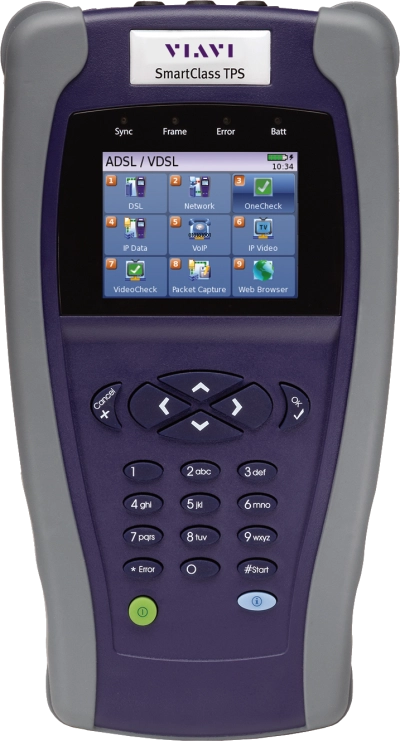VIAVI Care Support
* 5-year plans only; if applicable
View Support Plans On New Equipment
Factory Repair
VIAVI Solutions is a single-source supplier for all of your factory and on-site test equipment repair, maintenance, and calibration service needs.
We offer return-to-factory, fixed-rate repair services for all VIAVI test equipment. Fixed-rate repair provides the best turnaround time, streamlining the overall repair process and creating a very predictable and reliable repair experience at the best pricing.
Our technicians ensure that your equipment is functioning properly by completing any maintenance and install enhancements, including engineering change notice updates.
Find out more about our Factory Repair Services
Factory Calibration
Keeping your equipment in top-running shape with factory or onsite calibration services helps ensure your network will continue to operate at peak performance. A variety of options allow you to manage the logistics of calibrating your equipment, while maximizing your maintenance investment. Performing regular calibration of equipment ensures the accuracy of its measurements. Improper calibration, however can compromise a network and impact services.
Keep your equipment in top-running shape with VIAVI On-site Services that help to ensure your network continues to operate at peak performance. It's the most cost-efficient and effective way to maintain equipment on a timetable that meets your requirements.
Find out more about our Calibration Services
Self-Paced Training
VIAVI offers self-paced technical and product training as a flexible, efficient, and cost-effective training delivery option. Self-paced training offers a flexible training option for small groups of employees or those located remotely or in multiple locations. It’s an ideal training solution for instructing technicians who work in the field and cannot attend on-site classes.
Find out more about our Training Services
Priority Service
VIAVI Care Plan Priority Services and Technical Expert Application Center (TAC) Service Levels for Field Portable Instruments used to test fiber, cable TV, xDSL, metro and wireless networks
All customers enjoy Standard Plus support during the product warranty period and can upgrade to Premium TAC by purchasing a VIAVI Care Support Plan.
The hallmark of our test platforms is evolving, modular test features to allow customers to keep pace with advancing communications technologies. The learning process is not just “one and done,” and field teams often have high rates of turnover.
Find out more about our Priority Services
Battery / Bag Replacement Coverage
Batteries and bags wear out with daily use and charge cycles. To ensure these items don't slow you down, our 5 year plans include a replacement over the life of your 5 year plan.
VIAVI will provide a one-time replacement of bad battery and worn soft bag/glove within the duration of a 5-year SilverCare or MaxCare Support Plan. Replacement will only be replaced when the instrument is returned to VIAVI for repair or calibration service. Hard cases are excluded, and coverage is not applicable for instruments sold without bag/battery.
This coverage is Included in 5 year Silver and MaxCare Plans
Technical Assistance
The VIAVI Technical Support team can assist you in using/configuring products or address issues regarding product performance.
Visit our Technical Assistance section for more information.
MaxCare Accessory Replacement Coverage
Instrument products come with accessory cables and connector tips. To ensure reliable, accurate testing we will cover the replacement of one accessory annually, to ensure good test results.
When an accessory has been determined to be defective or faulty, VIAVI will, at no charge to customer, either repair the accessory or exchange at VIAVI’s discretion. Exchanged accessories may be new or refurbished. All returned accessories become property of VIAVI. The following limitations apply: no more than one accessory may be exchanged per 12 month period; applicable accessories include only those accessories that are considered essential to the operation of the instrument and were shipped with the original purchased product. The Customer is responsible for shipping faulty accessory back to VIAVI when there is a concern or during a calibration or repair service event.
Express Loaner
Now you can schedule calibrations or repairs with no downtime. The Express Loaner Service provides you with a similarly configured piece of equipment before sending yours in for calibration or for that unexpected repair that you need immediately.
 Image
Image Image
Image



